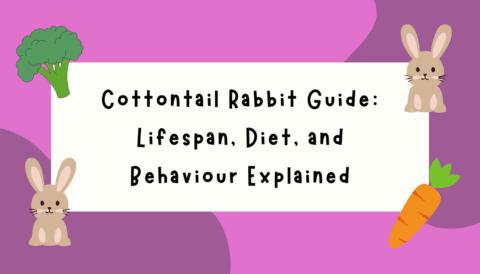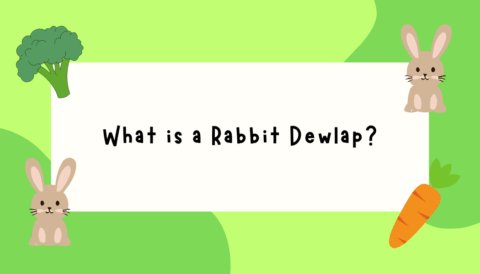Table of Contents
- What Is Hibernation? Understanding the Basics of Animal Dormancy
- Do Rabbits Hibernate in the Winter Months? Separating Fact from Fiction
- Why Do People Think Rabbits Hibernate in Winter? Common Myths and Misunderstandings Explained
- Do Rabbits Migrate to Warmer Areas in Winter? Debunking Migration Myths
- Where Do Rabbits Go in Winter? Exploring Rabbit Winter Shelter and Hibernation Alternatives
- How Do Rabbits Survive the Cold Winter Months Without Hibernating? Rabbit Adaptations to Winter Survival
- What Do Rabbits Eat in Winter? A Guide to the Rabbit Winter Diet
- Why Is Winter Especially Challenging for Wild Rabbits? Risks and Survival Strategies
- How to Help Wild Rabbits Survive the Winter: Tips for Rabbit Lovers and Winter Survival
- Final Thoughts: Rabbit Hibernation Myths and How to Help Rabbits Thrive Through Winter
What Is Hibernation? Understanding the Basics of Animal Dormancy
To understand why rabbits don’t hibernate, it helps to first understand what hibernation is.
Hibernation is a survival mechanism used by some animals to cope with cold weather and scarce food. During hibernation, animals:
- Drastically lower their body temperature
- Slow their heart rate and breathing
- Reduce metabolic activity
- Survive off fat reserves or food stored in advance
Hibernation is common in animals like hedgehogs, bats and some rodents. They essentially “shut down” for the winter and go into a deep sleep. But rabbits don’t hibernate – and here’s why.
Do Rabbits Hibernate in the Winter Months? Separating Fact from Fiction
No, rabbits do not hibernate in winter – or at any time of year. In fact, attempting to hibernate would be extremely dangerous for them.
Rabbits rely on a constantly active digestive system. If their metabolism slows too much, they risk gastrointestinal stasis, which can be fatal. According to the MSD Veterinary Manual, their normal body temperature stays between 101.5 – 104.2°F (38.6 – 40.1°C), and they can’t survive the drastic drops required for hibernation.
Wild rabbits are most active during twilight hours – dawn and dusk – when visibility is low, but they rely on their keen senses to navigate safely. This is when their unique vision plays a key role. While they can’t see in total darkness, they are highly adapted to low-light conditions, which helps them stay safe and forage effectively at these times.
Jet and Leo tend to loaf around a bit more when it’s cold (especially if they’ve claimed the sunniest spot in the house), but their activity doesn’t stop. It might look like they’re hibernating – but they’re just conserving heat, not going into a hibernation state. Similarly, wild rabbits stay alert and active throughout the winter, even if you don’t see them as often.

Why Do People Think Rabbits Hibernate in Winter? Common Myths and Misunderstandings Explained
It’s a common misconception. In winter, wild rabbits become less visible – leaving their shelters only to forage for food and avoid attracting predators. This reduced visibility can look like hibernation from the outside, but they’re simply conserving energy.
This belief is especially common when it comes to cottontail rabbits, who don’t dig deep burrows and instead hide in surface-level shelters. That makes them harder to spot.
Last winter, while walking through the woods near my house, I spotted a wild rabbit scurrying for shelter under a pile of fallen leaves. It was incredible to see how they use the environment to stay hidden from predators and the cold.
Do Rabbits Migrate to Warmer Areas in Winter? Debunking Migration Myths
This is a question I hear surprisingly often, and it’s an understandable one – after all, lots of animals migrate when the weather turns cold. But rabbits? They don’t.
Migration is when animals travel long distances from one region to another, usually with the seasons. Think of birds flying south for the winter – that’s migration. But rabbits are incredibly territorial and tend to stick to the same familiar area all year round.
Instead of packing up and heading somewhere warmer, rabbits tough it out by adjusting their routines. In winter, they’ll seek out better shelter – like thick brush or cosy burrows – cut back on how much they move around, and switch up their diet to survive on bark, twigs, and whatever else they can find when the leafy greens are gone.
So no, you won’t catch a rabbit sunbathing in Florida for the winter – but you will find them hunkered down, making the most of what their little corner of the world has to offer.
Where Do Rabbits Go in Winter? Exploring Rabbit Winter Shelter and Hibernation Alternatives
Rabbits are clever survivors. Different types of rabbits have different strategies:
European rabbits dig and live in complex underground warrens that protect them from wind, snow, and predators. These burrows stay warmer than the surface, providing essential insulation.
Cottontail rabbits, especially common in North America, don’t dig their own burrows. Instead, they find shelter in:
- Abandoned dens (left by other animals)
- Brush piles or leafy thickets
- Hollow logs or beneath porches and decks
These shelters offer limited protection, which is why cottontails often face greater risks from predators and the cold. Cottontails sleep as much as humans do – 8 hours per day – but in short bursts throughout the day and night, pulling their ears flat against their body to keep warm.
Want to know more? Check out our full Cottontail Rabbit Guide to dive deeper into their habits, habitat, and how to help protect them
If you’ve ever noticed subtle rustling in your winter garden or spotted faint tracks in the snow – you may have unknowingly had a wild bunny visitor.
How Do Rabbits Survive the Cold Winter Months Without Hibernating? Rabbit Adaptations to Winter Survival
Even without hibernation, rabbits have several adaptations to survive the cold:
- Thicker Winter Coats
As temperatures drop, rabbits naturally grow denser, softer winter fur for extra insulation. Jet and Leo go through seasonal shedding, and you can bet our vacuum works overtime in the autumn!
All that extra fluff isn’t just for show. For wild rabbits, the thicker fur helps trap body heat, especially around sensitive areas like the neck and feet.
If you’ve got a pet rabbit, regular grooming during this time is key – not only to reduce shedding around your home or their living area, but to prevent matting and potential health issues. Personally, I swear by the Small Pet Select Grooming Comb. It’s hands-down the best comb I’ve ever used on my rabbits – gentle, super effective, and the best part? They actually seem to enjoy it. Oxbow Animal Natural Science Papaya Support help prevent hairballs forming in your rabbit’s stomach.
- Shelter and Burrowing
Wild rabbits either dig their own burrows or make use of existing shelters. These underground spaces help maintain a more stable temperature, shield them from snow, and block icy winds.
I’ve built a few DIY shelters for wild rabbits in my garden, using insulated materials and straw to keep them warm and dry during winter. These shelters provide refuge from the cold, similar to the burrows wild rabbits dig or take refuge in. Ready-made wildlife hideaways are also available to buy and provide an insulated outdoor shelter for small animals.
- Energy Conservation
Rabbits conserve energy by loafing, minimizing movement, and staying close to cover when foraging. This is why you’ll rarely see them hopping in the open during winter.
- Huddling for Warmth
Some rabbits – especially those in shared dens – will nest together and huddle for warmth.
What Do Rabbits Eat in Winter? A Guide to the Rabbit Winter Diet
When grass and herbs are buried under snow and when plants and flowers wither and die, wild rabbits get creative with their winter diet. They rely on whatever plant material they can find, including:
- Bark from trees (especially fruit trees)
- Twigs, buds and pine needles
- Dried leaves
- Roots, if they can dig them up
- Wild forage like herbs or dried weeds
They tend to forage during dawn and dusk when predators are less active.
To help supplement their diet, consider placing compressed hay blocks or nutritious rabbit pellets around your garden. Avoid processed human food – it can do more harm than good.
Jet and Leo have it easy with their daily timothy hay, fresh herbs, and crunchy chews – all rabbit-safe treats that support digestion year-round. During colder months, I make sure Jet and Leo get more leafy greens to help them maintain energy, since fresh grass is harder to come by during winter.
Why Is Winter Especially Challenging for Wild Rabbits? Risks and Survival Strategies
Winter presents a number of life-threatening challenges for wild rabbits:
- Limited food sources
- Cold temperatures and frostbite risks
- Increased predator risk (less vegetation for cover)
- Hypothermia, especially for those without adequate shelter in wet or windy conditions
Many wild rabbits don’t make it through the winter. Populations often dip before rebounding in spring, when females give birth. Only about 30 percent of eastern cottontails survive an average winter.
How to Help Wild Rabbits Survive the Winter: Tips for Rabbit Lovers and Winter Survival
Want to make a difference for your local bunny visitors? Here are a few simple ideas:
- Plant Winter-Friendly Vegetation – Dense shrubs such as hawthorne or hazel, apple trees, and native grasses provide natural cover and forage.
- Leave a “Messy” Garden Corner – brush piles, leaves, and overgrown grass to create perfect hiding spots.
- Provide Shelter – a discreet rabbit shelter like this weather resistant hideaway gives rabbits a dry place to rest. Place it in a quiet, safe spot.
- Offer Forage (Responsibly) – scatter small amounts of timothy hay, bark, or rabbit pellets near natural shelter areas. Avoid sudden changes in their diet or offering large amounts. Don’t feed sugary human food, even if it’s tempting.
Final Thoughts: Rabbit Hibernation Myths and How to Help Rabbits Thrive Through Winter
So, do rabbits hibernate in winter? Definitely not. But their ability to adapt – by growing thick fur, hiding in clever shelters, and nibbling on bark and twigs – is seriously impressive.
Watching Jet and Leo snuggle up inside on frosty mornings reminds me how lucky they are to live indoors. But their wild cousins? They rely on instinct, adaptation, and sometimes a little help from humans like us.
Whether you’re a bunny parent, a wildlife enthusiast, or just a curious soul, I hope this helped answer your questions – and maybe inspired you to do something kind for the rabbits hopping around your neighbourhood this winter.




